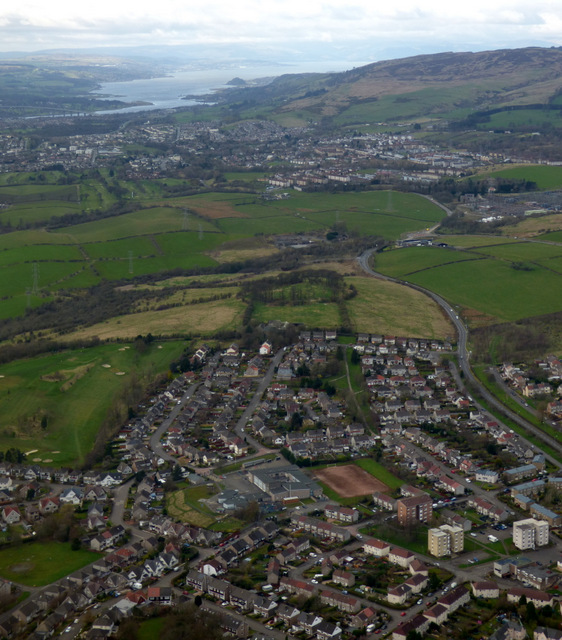Castlehill Fort on:
[Wikipedia]
[Google]
[Amazon]
Castlehill was a Roman fort on the Antonine Wall in
 Two Roman distance slabs were found at the site. One can be compared with another found near Summerston. Both these similar slabs, like two others from
Two Roman distance slabs were found at the site. One can be compared with another found near Summerston. Both these similar slabs, like two others from 
Scotland
Scotland (, ) is a Countries of the United Kingdom, country that is part of the United Kingdom. Covering the northern third of the island of Great Britain, mainland Scotland has a Anglo-Scottish border, border with England to the southeast ...
.
Location
The fort is located inEast Dunbartonshire
East Dunbartonshire ( sco, Aest Dunbartanshire; gd, Siorrachd Dhùn Bhreatainn an Ear) is one of the 32 council areas of Scotland. It borders the north of Glasgow and contains many of the affluent areas to the north of the city, including Bea ...
, west of Bearsden and east of Duntocher
Duntocher (Scottish Gaelic: ''Dùn Tòchair'' or ''Druim Tòchair'') is a village in West Dunbartonshire, Scotland. It has an estimated population of 6,850. The etymology of the name of the village indicates that its name means "the fort on the c ...
, south of the A810 Duntocher Road. Its neighbouring forts are Bearsden to the east and Duntocher to the west although there is a fortlet at Cleddans in between, with Hutcheson Hill nearer still.
A circular enclosed plantation of beech trees is about all a visitor can see nowadays. The summit of Castlehill provides a wide panorama overlooking many historical finds.
It's sometimes hard to see the exact line of the Antonine Wall at the location but there is some existing signage.
In the 1900s several historians gave their own idiosyncratic descriptions of the site.
Finds
 Two Roman distance slabs were found at the site. One can be compared with another found near Summerston. Both these similar slabs, like two others from
Two Roman distance slabs were found at the site. One can be compared with another found near Summerston. Both these similar slabs, like two others from Duntocher
Duntocher (Scottish Gaelic: ''Dùn Tòchair'' or ''Druim Tòchair'') is a village in West Dunbartonshire, Scotland. It has an estimated population of 6,850. The etymology of the name of the village indicates that its name means "the fort on the c ...
have two decorative pelta shields, one on either side of the slab. The horns of each shield are embellished with three rosettes on the Castlehill slab whereas the Summerston slab has these end in two griffins' heads.
The first, badly weathered, slab has four rosettes between the shields and the inscription. It was found in 1803 on Low Millochan farm. The farm, later called East Millichen, is near Summerston. It was built into a dovecot and records the building of 3666.5 paces of wall by the Sixth Legion. MacDonald describes the work as course and relates that some of the abbreviations are unusual. He suggests that it stood side-by-side with what he calls no. 6 (RIB 2193) at Summerston. On the similar Castlehill slab (RIB 2196) he suggests the stone-cutter has blundered and made a letter P where he should have a letter F (for Fidelis) on the fourth line. The Castlehill slab also records 3666.5 paces although the units used are a matter of ongoing research.
Another was found by a neighbouring farmer in 1826.
A Roman altar was found in the same year.
Many Roman forts along the wall held garrisons of around 500 men. Larger forts like Castlecary
Castlecary () is a small historic village in North Lanarkshire, Scotland, directly adjacent to the border with Falkirk. It has long been associated with infrastructure, being adjacent to a bridged river, a Roman fort and roads, a nationwide can ...
and Birrens had a nominal cohort of 1000 men but probably sheltered women and children as well although the troops were not allowed to marry. There is likely too to have been large communities of civilians around the site.

References
* * * {{coord, 55.9245, -4.3633, type:landmark_region:GB, display=title Forts of the Antonine Wall